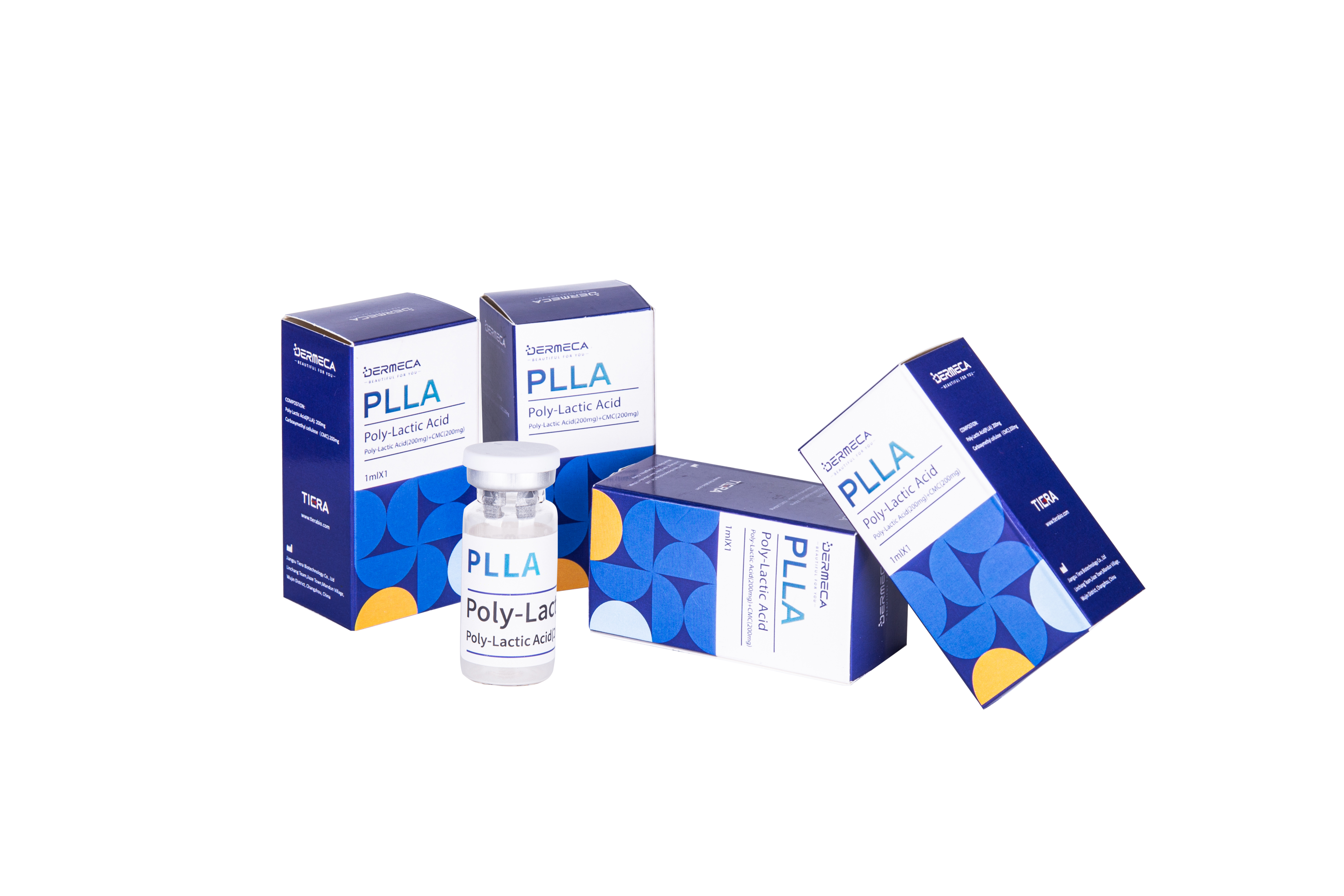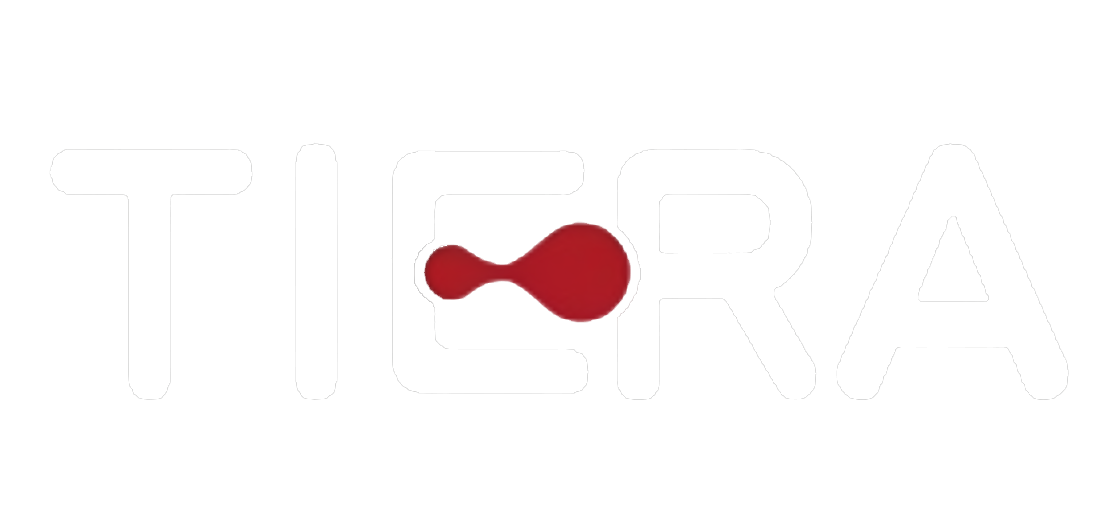מהי חומצת פולילאקטיד (PLLA) ואיך היא שונה מממלאים קלאסיים
חומצת פולילאקטיק, הידועה בשם PLLA, היא בעצם חומר מלאכותי שהגוף שלנו יכול להתמודד איתו ללא דחייה. מה שמייחד אותו מטיפולים אחרים הוא הדרך בה הוא פועל בתוך הגוף שלנו. בעוד שמילויים של חומצת הילורונית פשוט מגדילים אזורים על ידי מילוי פיזי, PLLA מעורר את תאי הגוף שלנו. הוא 'מעיר' את הפועלים הקטנים שנקראים פיברובלאסטים, כדי שיפrodu י collagen באופן טבעי. התהליך כולו לוקח זמן, לרוב מספר חודשים עד שאנשים מבחינים בשינויים אמיתיים. בגלל הגישה האיטית אך מתמדת הזו, PLLA בולט לעומת מילויים רגילים שבהם התוצאות מופיעות כמעט מיידית. רוב האנשים מדווחים על תוצאות טובות ביותר בין שישה לעשרים ושניים חודש לאחר הטיפול, בהתאם לקצב ההחלמה האישי ולגורמים של אורח חיים.
מילויים של חומצת הילורונית: שחזור נפח מיידי והידרציה
חומצה הialורונית פועלת ניסים כי היא שומרת באופן טבעי על מים, מה שנותן לעור את המראה השמן והكامل מיידית. רק מולקולה אחת קטנה של HA יכולה להחזיק בערך אלף פעמים את משקלה במשקל במים! בגלל זה היא כל כך טובה בהפיכת עור יבש למשומש ובריכוך הקמטים הקטנים שאנו מקבלים עם הזמן. מחקר חדש מ-2024 בחן אנשים שקיבלו טיפולים בהאלורון, וכמעט תשעת עשירים מהם ראו שינויים מורגשים בקווי החיוך ובצורת השפתיים כמעט מיד לאחר ההליך. הגיוני כשחושבים עד כמה העור שלנו מתערפל עם הגיל.
ההבדלים המרכזיים במבנה הכימי, תאימות ביולוגית ואופן פעולה
| גורם | פולילקטיק אסיד (PLLA) | חומצת הילורונית (HA) |
|---|---|---|
| מבנה | פולימר סינתטי | גליקוזאמינוגליקאן שמופיע בטבע |
| פעולה ראשית | הנעת קולגן לאורך 3 חודשים ומעלה | הידרציה מיידית + נפח |
| הפיכה | לא הפיך | ניתן לפירוק בעזרת היאלורונידאז |
בעוד ש-PLLA הוא 100% מתכלה, התהליך ההדרגתי של בניית הקולגן מחייב מספר ישיבות. התכונות ההידרופיליות של HA מציעות תוצאות מהירות יותר אך פחות עמידות (6–18 חודשים), מה שעושה שכל ממלא מתאים ליעדים אסתטיים שונים.
משך, עמידות ודרישות תחזוקה של ממלאי PLLA לעומת ממלאי HA
מהו משך הזמן שבו תוצאות של חומצה פולילקטית נמשכות? עירור קולגן לאורך זמן
חומצת פולילאקטיד, הידועה בשם PLLA, פועלת באמצעות תהליך ביוסטימולטורי מיוחד שממריץ ייצור קולגן, מה שמחזק את הנפח הפacial במשך כשני עד ארבעה חודשים. בעוד שמילויים של חומצת הילורונית נותנים תוצאות מיידיות, האפקטים של PLLA מתפתחים עם הצטברות הקולגן התוך, תהליך שנמשך כשלושה עד שישה חודשים לאחר הטיפול. לפי מחקר קליני, התוצאות של PLLA נמשכות בערך 18 עד 25 חודשים, על פי ניסיונות ה-FDA. לאחר שנתיים, כ-87% מהמשתתפים עדיין הראו שיפורים מורגשים, לפי המחקר של Diaminy משנת 2025. בשל האפקטים המתמידים הללו, מרבית המעסיקים ממליצים על PLLA לאנשים שרוצים חידוש פנים לטווח ארוך, מבלי שיהיה עליהם לחזור כל כמה חודשים לטיפולים נוספים.
מتوسط תוחלת החיים של חומצת הילורונית באיזורי הפנים וגורמים המשפיעים על פירוקה
ממלאי חומצת הialuronic מציעים שחזור נפח מיידי אך מתפרקים מהר יותר עקב פירוק אנזימתי. משך הזמן שלהם משתנה בהתאם לאתר ההזרקה:
- 6–9 חודשים באיזורי תנועה גבוהים (שפתים, קמטים בין אפו-شفתיים)
- 9–18 חודשים באזורים סטטיים (לחיים, מקומות)
קצב חילוף החומרים, חשיפה ל-UV וגורמיםライフסטייל (כגון עישון) מואצים את התפוגה של חומצת ה-hyaluronic. מחקר משנת 2025 מצא שמשך החיים של המלء קטן ב-22% בעור שנחשף לשמש בהשוואה לאזורים محمיים ( פלסטיка וניתוח שיקומי גלובלי פתוח ).
לוחות טיפול ושימור: טיפול חד-פעמי מול פרוטוקולים מרובי ביקורים
| גורם | Plla | ממלאי HA |
|---|---|---|
| פרוטוקול ראשוני | 2–3 ישיבות במרווחי זמן של 4–6 שבועות | טיפול יחיד |
| תדירות תחזוקה | כל 12–24 חודשים | כל 6–12 חודשים |
| התחייבות המטופל | השקעה ראשונית גדולה יותר של זמן | התחייבות ראשונית נמוכה יותר |
הגישה השלבה של PLLA מאפשרת למטפלים לעצב תוצאות באופן הדרגתי, בעוד ש-HA מתאים ללקוחות שמעדיפים תוצאות מיידיות. עם זאת, 68% מהמשתמשים ב-PLLA מדווחים על שביעות רצון גבוהה יותר לאורך זמן עקב דרישה נמוכה יותר לתחזוקה ( כתבת העניין של דרמטולוגיה קוסמטית , 2024).
תוצאות קליניות ורמת סיפוק של מטופלים: חידוש הדרגתי לעומת תוצאות מיידיות
תוצאות כפי שמדווחים מטופלים על חומצה פולילקטית: נפח שנראה טבעי לאורך שבועות
כשמדובר בפולילקטיק אסיד או PLLA, מה שמחזירים עליו הוא עלייה איטית אך מתמדת בייצור קולגן. מרבית האנשים מתחילים להבחין בשינויים אמיתיים כעבור 4 עד 8 שבועות, אם כי כמובן שכולם שונים זה מזה. מחקרים קליניים מראים גם משהו מעניין – כשמונה מתוך עשרה חולים מעדיפים את הגישה ההדרגתית הזו כשעושים טיפול באזור הלחיים או הקמטים סביב האף והפה. הם מעריכים את העובדה שזה לא גורם להם להיראות שונים באופן פתאומי, מה שיכול להיות די מטריד. התוצאה הסופית? מדובר בערך ב-20 עד 30% יותר צפיפות קולגן בעור. התוצאות האלו בדרך כלל מתבססות לאחר כשבעה חודשים ומשמרות למשך פרק זמן של בין 18 ל-24 חודשים, בתנאי שמתייחסים לטיפוח העור. עבור אנשים שרוצים שיפורים עדינים במקום שינויי פנים מיידיים, ה-PLLA אכן מתאים למטרה.
שביעות רצון מיידית ועריכות בעזרת ממלאי חומצת הialורונית
מילויים שמבוססים על חומצת הילורונית, שנעשה בהם שימוש נרחב כדי להגדיל את השפתיים, מספקים 80 עד 90 אחוז מהנפח המבוקש באופן מיידי. בגלל זה כל כך הרבה אנשים בוחרים בהם לפני אירועים גדולים או צילומי אופנה, כשנדרשים תוצאות מיידיות. אבל יש גם צד שני לסיפור. כשליש משני של המטופלים מגלים שהם צריכים התאמות מסוימות תוך שבועיים בגלל התנפחות לא אחידה או הבדל בין צד לצד. החדשות הטובות הן שהתיקון של בעיות אלו אינו מסובך במיוחד gratitude למשהו שנקרא הילורונידאז. עם זאת, אצל רוב האנשים התוצאה מתחילה להתפוגג לאחר somewhere בין שישה לת שנים עשרה חודשים. השפתיים מפרקות את חומצת הילורונית הרבה יותר מהר מאשר אזורי פנים כמו הקטניות, מה שאומר שתיקוני שדרוג נדרשים לעיתים קרובות יותר לאיברי פנים שנעים הרבה במהלך פעילויות יומיומיות.
מחזורי טיפול חוזרים וניהול תקוות ריאליות
- Plla : דורש 2–3 ישיבות במרווחי זמן של 4–6 שבועות כדי לערום צמיחה של קולגן
- HA : יש מספיק בשיחות יחידות, אך 85% בוחרים בתיקון שנתי
מעשנים מדגישים את היתרונות המצטברים של PLLA במהלך התייעצויות – מנות של 1 מ"ל לאורך שלוש ביקורות מספקות תמיכה מבנית יציבה יותר מאשר נפח שווה של HA. עבור לקוחות שמתעניינים בזמן, שילוב התיקון המיידי של HA עם המבנה לטווח הארוך של PLLA משיג גם את הצריכים האסתטיים המיידיים וגם את הקיימות הארוכה.
פרופילי בטיחות, סיכונים והפיכות: השוואת אירועים שליליים וניהול סיכונים
תופעות לוואי נפוצות ושעת דاון לשני סוגי המלء
ממלאים של חומצת פולילאקטיד (PLLA) וחומצת הialורונית (HA) בדרך כלל מציגים דוחות בטיחות דומים. רוב האנשים חווים רק תופעות לוואי קלות כמו נפיחות או רגישות לאחר הטיפול, שמתפוגגות בדרך כלל תוך כשבוע על פי מחקר מתוך כתב העת לניתוחי קוסמטיקה בשנה שעברה. אנשים שמזריקים HA נוטים להחלים מהר יותר. כשמונה מתוך עשרה מטופלים מדווחים שהחבורות מתפוגגות תוך שלושה עד חמישה ימים, בעוד PLLA לעתים קרובות משאיר נפיחות קלה המתמשכת כשבועיים. בחינה של קבוצות נתונים גדולות עוזרת לשים דברים בפרספקטיבה. ניתוח רחב covering מעל 12,000 הליכים בשנת 2024 הראה תוצאות דומות מאוד בנוגע לאדמומיות לאחר הזרקה. בערך אחד מכל חמישה מטופלים חווה תגובה זמנית זו ללא תלות בסוג המלء, כל עוד המטפל עבר הכשרה מתאימה.
סיכונים ספציפיים ל-PLLA: גושים, גרנולומות ואסטרטגיות מניעה
בעוד PLLA מגביר קולגן דרך תגובה דלקתית מבוקרת, 1–5% מהמטופלים מפתחים גושים מוחשים – במיוחד כאשר לא עוקבים אחר פרוטוקולי ההמסה הראשוניים בצורה מדוקדקת. תגובות גרענומטוזיות מתרחשות בפחות מ-0.8% מהמקרים, לעתים קרובות קשורות לתיקון יתר באזורים עם עור דק כמו הגבות. הדרכת ה-ASDS הנוכחית ממליצה:
- להשתמש במים סטריליים 5 מ"ל לכל צינורית
- לחכות 72 שעות לאחר החידוש לפני ההזרקה
- להזריק את המוצר בשכבה תת-עורית עמוקה
יתרון הבטיחות של חומצת הialורונית: הפיכות בעזרת הילורונידאז
יתרון עיקרי אחד של ממלאי HA הוא שרוב הבעיות יכולות לה biếnור די מהר אם יש צורך. כ-98 מתוך כל 100 סיבוכים יתפזרו תוך יומיים בלבד כאשר מטפלים בהם בעזרת חומר הנקרא הילורונידאז. האנזים פועל על שרשראות הפולימרים של HA בכמות של כ-10–15 יחידות בינלאומיות עבור כל עשירית מיליליטר של הממלא שנעשה בו שימוש. כלומר, רופאים יכולים לתקן דברים כמו שפתיים שנראות מלאות מדי או לתקן טעויות באזור תעלות הדמעה מבלי להשאיר סימנים קבועים. מאידך, PLLA פועל אחרת מכיוון שהוא בונה קולגן לאורך זמן, מה שמאלץ את השינויים להיות קבועים לנצח. בגלל זה הרבה אנשים שמנסים ממלאים לראשונה חושבים פעמיים לפני שבוחרים באפשרות זו, שכן אין דרך חזרה לאחר שהאפקט נקבע.
| معامل בטיחות | פולילקטיק אסיד (PLLA) | חומצת הילורונית (HA) |
|---|---|---|
| הפיכה | לא הפיך | אפשרות התמוססות אנזימטית |
| תגובות מאוחרות | סיכון לצמתים בשבועות 4–8 | נדיר מעבר ל-14 יום |
| אזורים קריטיים | למנוע שכבות לחיים שטחיות | שכבת העור האמצעית אידיאלית לשפתיים |
בחירת המילוי המתאים: התאמת חומצת פולילאקטיק וחומת החמר להיעדרויות הלקוחות ולצרכים של הפרקטיקה
מועמדים אידיאליים לחומצת פולילאקטיק: מי שסובלים מאיבוד נפח וחפצים בתכונה ארוכת טווח
מילויי PLLA פועלים היטב עבור אנשים שרוצים לעורר ייצור קולגן באופן הדרגתי באזורים שבהם יש איבוד נפח מורגש, במיוחד באזור הלחיים והקמורות. בהשוואה למוצרי חומת החמר, ל-PLLA נדרשים כארבעה עד שישה שבועות כדי להראות תוצאות, מה שהופך אותו לבחירה טובה למי שרוצה תוצאות שנראות טבעיות אך נמשכות לאורך זמן. לפי מחקר שהתפרסם לאחרונה בכתב העת Aesthetic Surgery Journal בשנת 2023, כשמונה מתוך עשרה מטופלים המשתמשים ב-PLLA ראו שיפורים שנמשכו לפחות שמונה עשרה חודשים. לרוב האנשים נדרשת רק אחת או אולי שתי ביקורות נוספות בכל שנה לאחר סיבוב הטיפול הראשוני.
השימושים הטובים ביותר לחומת החמר: שפתיים, קמטים עדינים ושיפורי שיקוע
ממלאי חומצת הילורונית פועלים היטב לשפתיים, קמטים מסביב לפה וקמטים עדינים מכיוון שהם מגדילים את הנפח מיידית ושומרים על העור רטוב. יתרון גדול הוא שאם מישהו לא מרוצה מתוצאות הטיפול, הרופאים יכולים למעשה להפוך את התוצאה באמצעות אנזים שנקרא הילורונידאז. זה הופך את החומצה ההילורונית למתאימה במיוחד לאנשים שמנסים ממלאים לראשונה או למי שחפצים בשינויים קטנים ולא בשינויים דרמטיים. לפי מחקרים אחרונים משנת 2024, רוב המטופלים (כ-94%) דיווחו על שביעות רצון לאחר קבלת תזוקות חומצת הילורונית לשפתיים, בהשוואה לקצב שביעות רצון של כ-78% ביחס למוצרים מבוססי PLLA לטיפולים דומים. נתונים אלו מדגימים מדוע כל כך הרבה מעשיינים מעדיפים את חומצת הילורונית כאפשרות ראשונה לבחירה בהליכים של צעירות הפנים כיום.
ניתוח עלות-תועלת ודבקות בעיסוק: הדרכה, מלאי והליכים משולבים
| גורם | פולילקטיק אסיד (PLLA) | חומצת הילורונית (HA) |
|---|---|---|
| אורך חיים | 18–24 חודשים | 6–12 חודשים |
| אימונים | 3 טיפולים (מרווחים של 6 שבועות) | מושב יחיד |
| כישורי צוות | טכניקות מתקדמות של קניולות | פרוטוקולים סטנדרטיים של סירנגים |
| החזקה של הלקוח | עלות ראשונית גבוהה יותר, ביקורים פחות תכופים | עלות התחלתית נמוכה יותר, שיקום רב יותר |
מרפאות שמשלבות גם ממלאים רואות שיעורי החזקה של 23% גבוהים יותר בהשוואה למרפאות המשתמשות רק ב-HA ( ניתוח עור , 2022). PLLA דורש הדרכה מיוחדת אך מפחית את צורכי המלאי ארוכי הטווח, בעוד ש-HA תומך בזרימת מזומנים יציבה באמצעות הזמנות חוזרות.
שאלות נפוצות
מה ההבדל העיקרי בין ממלאי PLLA לממלאי HA?
ממלאי PLLA מעודדים ייצור קולגן לאורך זמן, מה שמוביל להגברת נפח הדרגתי, בעוד שממלאי HA מספקים אפקט הידרציה וניפוח מיידי.
כמה זמן תוצאות המילוי של PLLA ו-HA נמשכות?
תוצאות PLLA יכולות להימשך בין 18 ל-25 חודשים, בעוד שתוצאות ממלאי HA נמשכות בדרך כלל בין 6 ל-18 חודשים, בהתאם לאתר ההזרקה ולגורמים המשפיעים על פירוק החומר.
האם ניתן להפוך את אפקט ממלאי HA?
כן, אפקט ממלאי HA ניתן להפיכה בעזרת אנזים בשם הילורונידאז, אשר יכול להמיס את הממלא.
האם יש סיכונים הקשורים למילויים מסוג PLLA?
למרות שמילויים מסוג PLLA נחשבים בדרך כלל לבטוחים, 1–5% מהמטופלים עלולים לפתח גידולים קטנים או גרנולומות, במיוחד אם לא עוקבים אחר פרוטוקולי ההימעכות באופן תקין.
תוכן העניינים
- מהי חומצת פולילאקטיד (PLLA) ואיך היא שונה מממלאים קלאסיים
- משך, עמידות ודרישות תחזוקה של ממלאי PLLA לעומת ממלאי HA
- תוצאות קליניות ורמת סיפוק של מטופלים: חידוש הדרגתי לעומת תוצאות מיידיות
- פרופילי בטיחות, סיכונים והפיכות: השוואת אירועים שליליים וניהול סיכונים
- בחירת המילוי המתאים: התאמת חומצת פולילאקטיק וחומת החמר להיעדרויות הלקוחות ולצרכים של הפרקטיקה
- שאלות נפוצות


